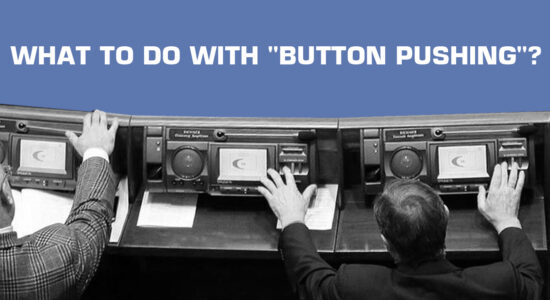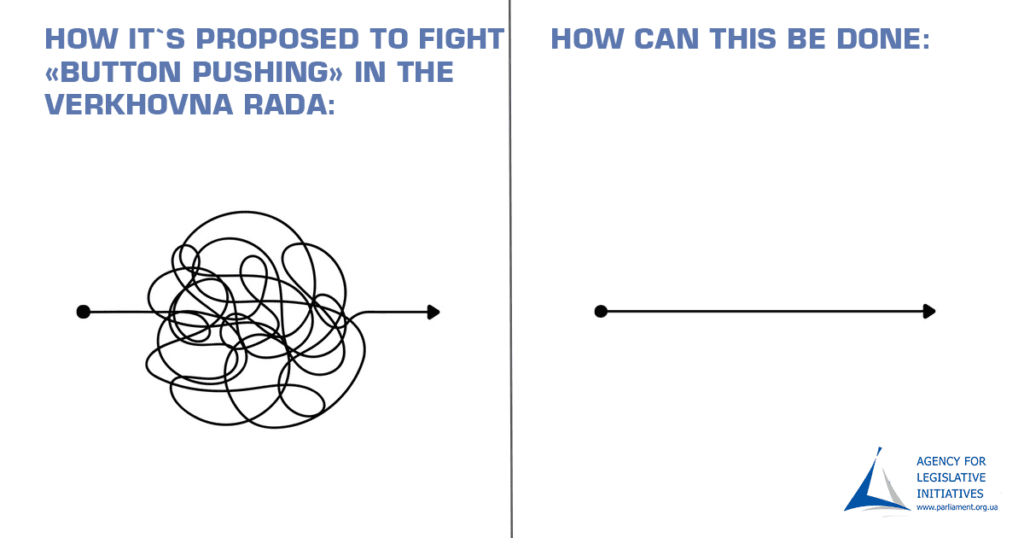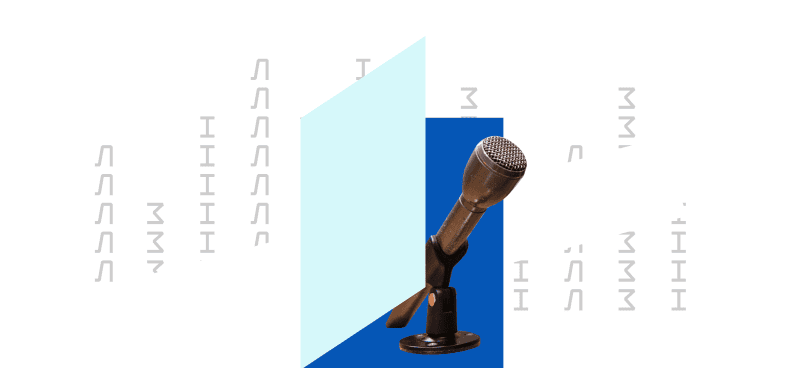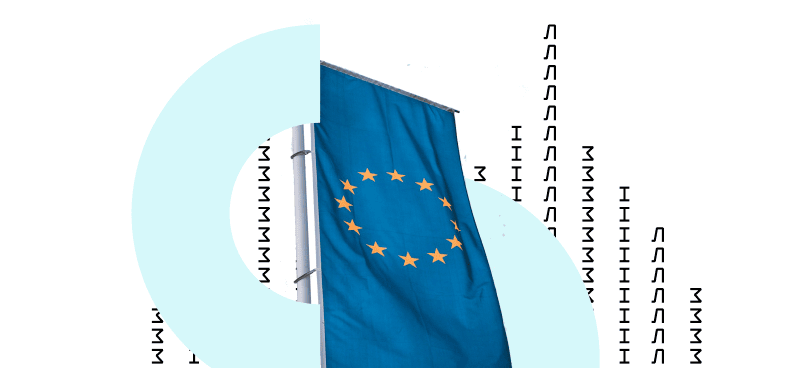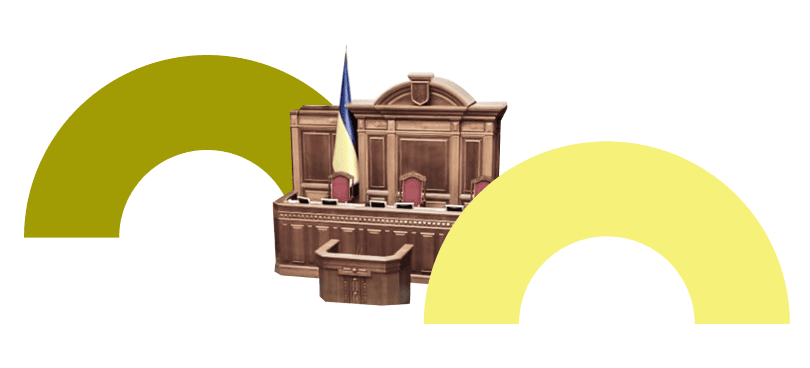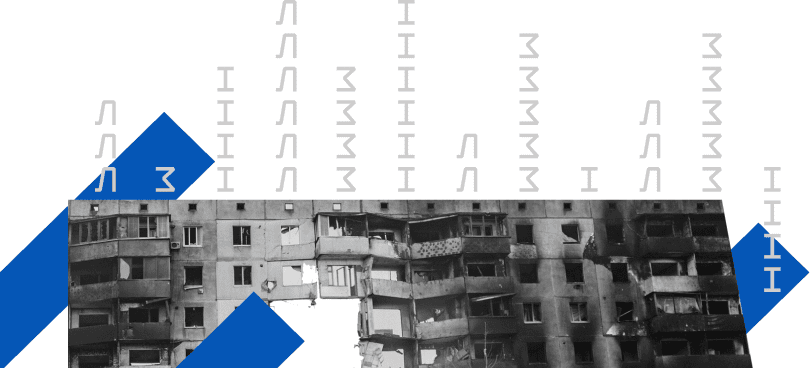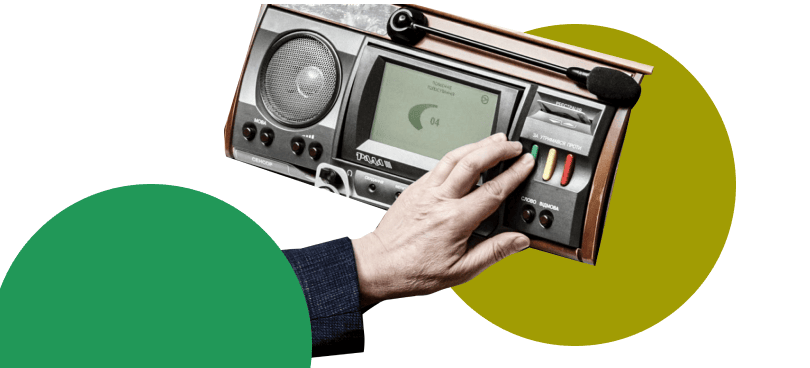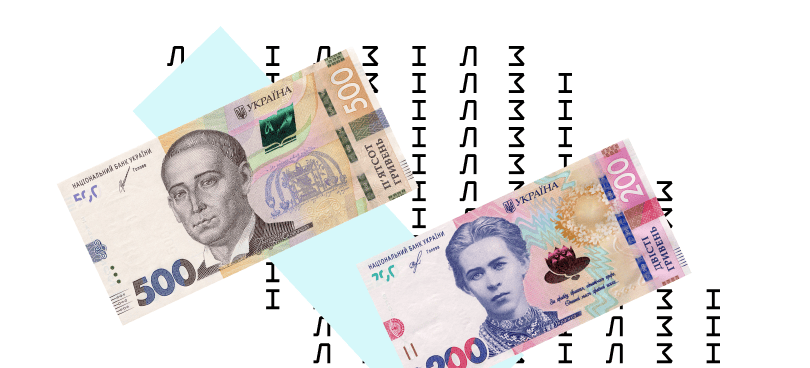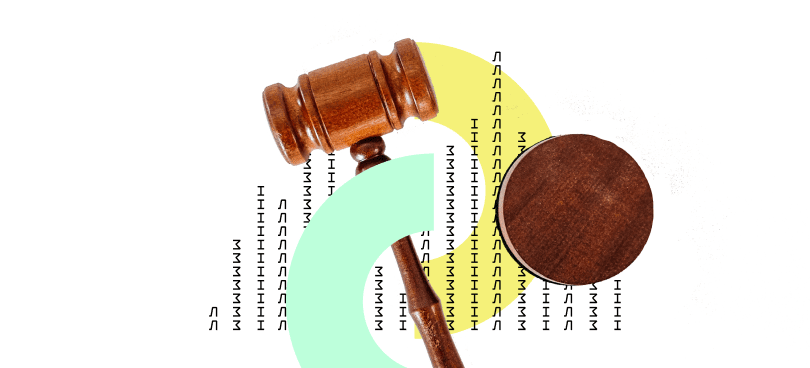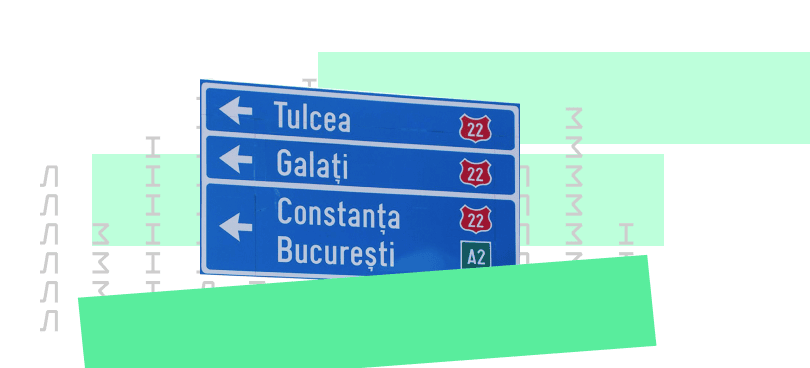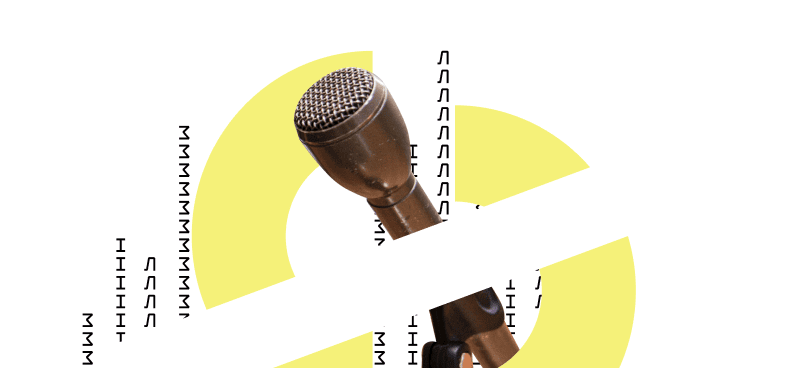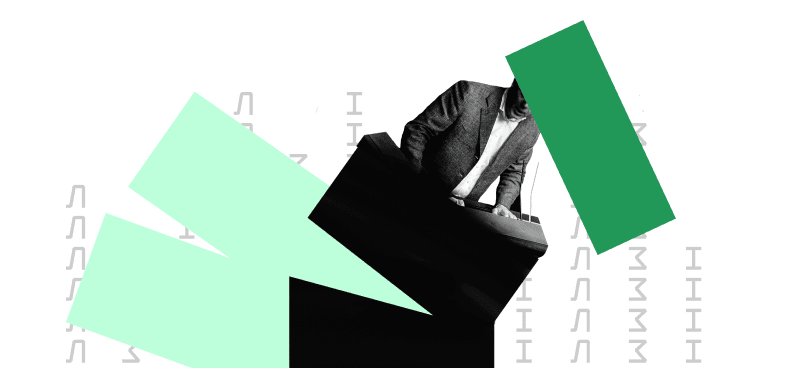The Prosecutor General’s Office of Ukraine handed over the first notice of suspicion to the member of parliament for “button pushing”. This is the first attempt in Ukraine history to bring an MP to justice for impersonal voting.
“Button pushing” in the Verkhovna Rada since December 2019, when the law was passed, falls under criminal liability and is punishable by a fine of three to five thousand non-taxable minimum incomes (which is now about 51-85 thousand hryvnias).
Moreover, bringing a parliamentarian to justice may lead to the termination of his powers. According to Article 81 of the Constitution of Ukraine, a Member of Parliament’s powers are terminated prematurely, particularly in the case of “coming into force of a conviction against him”. That is, now, in the story with the first notice of suspicion of “button pusher”, the court is to decide.
The introduction of criminal liability for impersonal voting and suing a case in court – on the one hand, can show results, and on the other can be a mechanism for fighting opposition MPs and covering up “the loyal MPs”, which carries many risks for Ukrainian parliamentarism.
Besides, MPs have “button pushed” long before the first notice of suspicion from the Prosecutor General and can do it further. After all, their guilt still needs to be proved in court. And this is a rather long process. Besides, evidence is needed. And the recent story with videos that recorded “button-pusher” during the vote for Minister of Science and Education appointment proves – the evidence may “disappear”.
It is necessary to have a “Plan A” – a mechanism that will make impersonal voting impossible for MPs. At the beginning of 2021, the Verkhovna Rada began active talks on overcoming “button pushing”. Verkhovna Rada Speaker Dmytro Razumkov announced some changes that could help eradicate impersonal voting. In particular:
- Vacant seats reserved for MPs from the temporarily occupied territories will be disconnected from the Rada system;
- All cards of MPs will be tied to a specific place;
- Additional video cameras will be installed in the hall to record the voting;
- The possibility of changing the Rules of Procedure is considered so that the “button pushers” could be suspended for several weeks;
- It is planned to transfer the parliament to the Rada-4 system, but funds are needed for this.
Will these innovations help prevent “button pushing”? And is there another, easier way?
In the Agency for Legislative Initiatives, we talked about this with the head of the NGO “Electronic Democracy”, ex-adviser to the Chief of the Apparatus of the Verkhovna Rada of Ukraine, and the USPS Alumnus Volodymyr Flonts. During the VIII convocation of the Verkhovna Rada, the expert, and his team spent six months researching the problem of “button pushing” and testing possible solutions. We will talk about one of these options, which also has its drawbacks, but it can work already – without additional funds and time.
The root of the problem
“Button pushing” is not so much a matter of impersonal voting. Because in the Verkhovna Rada, an MP always votes for himself for the first time, no matter where he/she sits, no matter what card he/she votes with. The problem is repeated voting when the MP has time to press as many buttons as possible in 10 seconds while voting goes. It is from this that we must proceed.
The architecture of the Rada’s electronic voting system was built so that an MP could vote from anywhere in the session hall by simply inserting a card and pressing a button. There is currently no binding to a specific location.
Volodymyr Flonts says that it doesn’t matter where an MP voted from, if he did it once. Therefore, all allegations about cards are a shift of focus to another topic and not a solution to one-time or multiple voting. The issue of “button pushing” is exclusively about “once or many”. Not “by what card”, “from what place”, “in what way”, “under the cameras or not”.
Restriction of rights
The electronic system “Rada” does not determine the procedure and method of voting. It is an electronic tool for counting votes. If it differs in any way from the old-fashioned voting procedure by raising hands, then this instrument starts to limit the rights and opportunities of MPs.
Volodymyr Flonts says: “The proposed changes are cosmetic. They do not solve the problem but only create restrictions for MPs. Before, if the MP’s desk is temporarily out of order, the button is stuck, the MP could insert his card into the next desk and vote. The rights of MPs did not decrease”.
Now, if you attach each MP to a particular console, then there is a restriction of parliamentarians’ rights. MP, for example, will be able to apply to challenge the results of a vote because his button did not work, and he could not vote. Then there is a possibility that the results of the voting will be questioned.
The decision to disconnect some seats from the system and allow MPs to vote exclusively from their seats may prove ineffective. Instead, much more potential harm than good can be expected from it.
There is a way out
It is necessary to introduce such a voting mechanism, which would make it impossible to vote repeatedly.
The Rada-3 electronic voting system is established in the Ukrainian parliament. It counts how many and which buttons the MPs pressed to vote for a particular bill.
Now the voting is as follows: within 10 seconds, the MP must press one of the buttons on the electronic voting machine – “for”, “against” or “abstained”, after which the electronic system counts each press of the button. Thus, during these 10 seconds, one MP can run through the plenary hall pressing buttons – and all these votes will be counted.
A technical solution is needed that would prevent parliamentarians from voting many times. And this decision has already been tested in the current Rada-3 system. Its essence is to introduce a mechanism so that the system considers the vote only when the button is pressed at the end of voting. Thus, MPs will not be able to run because they will have to keep one hand on the button until the end of the vote.
And here – the problem of repeated voting is almost wholly solved without disconnecting cards, installation of cameras, and anything else.
The only question is, what to do with the second hand of the MP? After all, the most cunning parliamentarians will be able to press two buttons – their own and someone else’s – during the voting.
One possible solution is a touch button that responds to living matter.
According to Volodymyr Flonts, it is already placed in the electronic voting machines in Verkhovna Rada. But it is not turned on in the Verkhovna Rada.
The principle of voting using the touch and mechanical buttons is as follows: within 10 seconds, the MP must press the voting button with one hand and the other hand hold on the touch button. The buttons are placed on the electronic voting machine so that you can not press both with one hand.
Thus, both hands of the MP will be occupied. It is the end of the story with the possibility of multiple voting because there will be no physical opportunity to vote several times. It is proved by Kyiv City Council’s example, where since the introduction of the touch button (2015), “button pushers” have not been detected.
Rada-3 vs. Rada-4
There were several generations of electronic voting systems in the Verkhovna Rada. All of them are developed in Ukraine. The first Rada was introduced in 1990, the second – in 1993, and Rada-3 – in 2002. This system still functions in the Ukrainian parliament.
After the development of the third generation, scientists immediately began working on the next one. But this invention is not so new either, because, for example, the Kyiv City Council has been operating the Rada-4 system since 2015.
The head of the NGO “Electronic Democracy” notes that “Rada-3” and “Rada-4” differ fundamentally only in the size of the monitor. In the third one – black and white screen, small font, inconvenient to read. In the fourth one – a large and color screen. The developers wanted to make a touch screen additionally, but it is not provided in the current version of “Rada-4”.
But, even in the current Rada-3, which is installed in the parliament, there is the same touch button as in Rada-4!
Yes, when Rada-3 was made, it had only a mechanical voting button. In 2008, the Rada-3 installed in parliament was retrofitted with a touch button instead of changing the entire system. But this second button wasn’t simply turned on.
During the VIII convocation of the Verkhovna Rada, the two-button voting mechanism was tested. All the nuances have been corrected. There was a real chance to introduce a principle that would make “button pushing” impossible: when an MP has to hold the voting button with one hand and the touch button with the other hand within 10 seconds.
However, it was decided to introduce new rules not at the last session of the VIII convocation but for the new Verkhovna Rada. As a result, nothing has changed. On the day when a public test of the Rada-3 system with a touch button was scheduled, the Security Service of Ukraine (SSU) and State Bureau of Investigation (SBI) detectives entered the Verkhovna Rada and blocked the work of the parliament’s computer center. A new mechanism has not been introduced.
To make “button pushing” impossible, we need political will and one decision. It is not necessary to “invent a bicycle” with cameras and cards of MPs. But it seems to be much more complicated than promising and declaring a victorious fight against impersonal voting.

